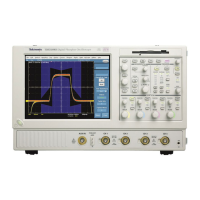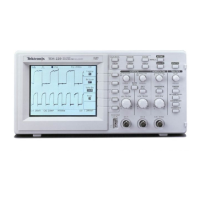Data Input and Output
3- 208
TDS5000 Series User Manual
For information on connecting the oscilloscope to a network to enable printing,
file sharing, Internet access, and other communication functions, see Connecting
to a Network on page 1--12.
Other Communication

